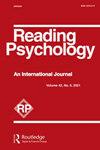自顶向下和自底向上的阅读过程对英语学习者目标词汇学习和记忆的影响
IF 1
Q4 PSYCHOLOGY, EDUCATIONAL
引用次数: 1
摘要
自上而下和自下而上的阅读过程已经引起了ESL/EFL教学研究者的关注。然而,这些过程及其组合在二语词汇学习和保留中的作用仍有待进一步研究。鉴于此,本研究试图考虑他们在伊朗英语学习者二语词汇学习和保留中的作用。为此,从180名英语学习者的方便样本中选择了100名中间参与者。然后,他们被随机分为四组(自上而下、自下而上、组合和对照)。最后,通过即时(学习)和延迟(保留)后测试来评估目标词汇的学习和保留。方差分析结果显示,自下而上的组表现优于对照组。在后测试中,联合组的表现也优于自上而下组和对照组。然而,自上而下组和对照组之间的差异并不显著。此外,组合组在平均得分方面超过了其他组。至于保留,自下而上和组合的过程都导致了目标词汇的保留,前者更有效。可以认为,这些过程可以作为二语词汇学习和保留的补充因素。本文章由计算机程序翻译,如有差异,请以英文原文为准。
Combined and Differential Effects of Top-down and Bottom-up Reading Processes on Target Vocabulary Learning and Retention by EFL Learners
ABSTRACT Top-down and bottom-up reading processes have attracted attention from researchers in ESL/EFL teaching/learning. However, the role of these processes and their combination in L2 vocabulary learning and retention still needs further research. Given this, this study sought to consider their role in L2 vocabulary learning and retention by Iranian EFL learners. To this end, 100 intermediate participants were chosen from among a convenience sample of 180 EFL learners. They were then assigned to four random groups (Top-down, Bottom-up, Combined and Control). Finally, target vocabulary learning and retention were assessed by an immediate (learning) and delayed (retention) post-test. ANOVA results revealed that the bottom-up group outperformed the control group. The combined group also did better than the top-down and control groups on the post-test. However, the difference between the top-down and control group did not prove significant. In addition, the combined group surpassed the other groups in terms of the gain in mean scores. As for retention, both the bottom-up and combined processes resulted in the retention of the target vocabulary, with the former being even more effective. It can be suggested that these processes can be regarded as complementary factors in L2 vocabulary learning and retention.
求助全文
通过发布文献求助,成功后即可免费获取论文全文。
去求助
来源期刊

Reading Psychology
PSYCHOLOGY, EDUCATIONAL-
CiteScore
2.20
自引率
7.10%
发文量
28
期刊介绍:
Prepared exclusively by professionals, this refereed journal publishes original manuscripts in the fields of literacy, reading, and related psychology disciplines. Articles appear in the form of completed research; practitioner-based "experiential" methods or philosophical statements; teacher and counselor preparation services for guiding all levels of reading skill development, attitudes, and interests; programs or materials; and literary or humorous contributions.
 求助内容:
求助内容: 应助结果提醒方式:
应助结果提醒方式:


